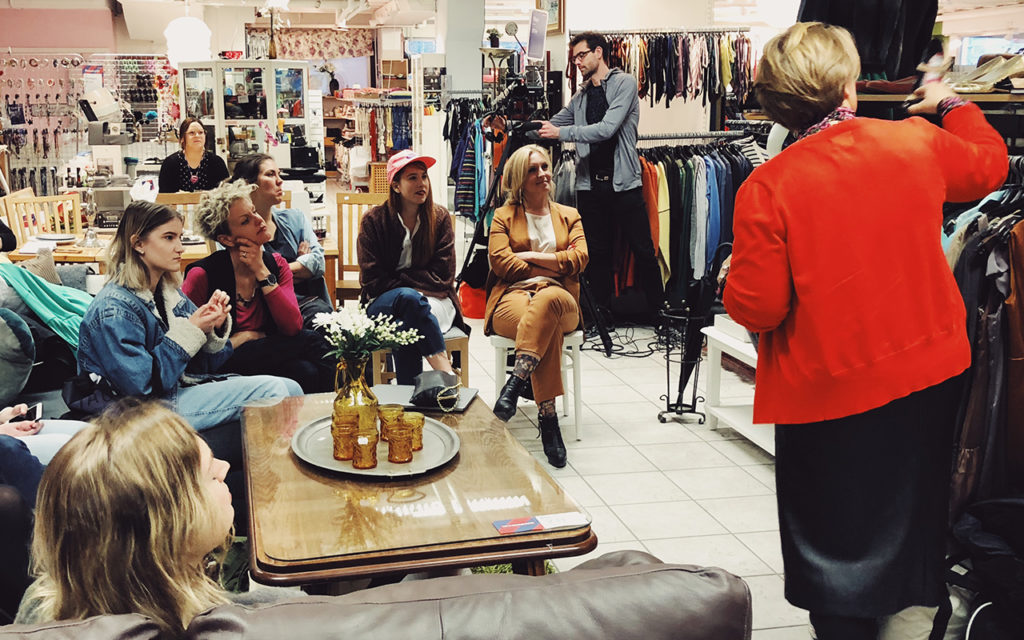Crosscurrents in the closet after successful re:textile project
Almost all participants in F/ACT Movement say that they have changed their buying behavior during the course of the research project. Some see the clothing industry with brand new eyes, and one of the participants says that she has regained her creativity and a newfound respect for craftsmanship.
These and even more insights have hit home with participants in F/ACT Movement, a re:textiles research project that has now concluded after six months.

Adrian Zethraeus, the project manager for re:textile, recalls when the idea for F/ACT Movement first surfaced.
“It was during a re:textile management team meeting in early 2018. Janne Carlsson, a senior advisor at the Swedish School of Textiles, had been sitting on the bus sketching on the way here, which he does before our meetings. He always has a sheet of paper with the vision for the next step,” says Zethraeus, laughing.
“And on this particular sheet, Janne had an idea about a polluted marine reserve that, when protected and removed from external influences, recovers quite well. Eventually the marine reserve becomes a sustainable functioning ecosystem again. He thought that the reserve symbolizes the closets of consumers that need to be closed to external influx and pollution to promote creative and sustainable behavior.”
And in that sense, it does. Re:textile, together with the Gothenburg Region and the Swedish Fashion Council, has promoted F/ACT Movement, which kicked off in earnest in March 2019. The idea behind F/ACT Movement, in brief, was for 10 people with equal measures of climate anxiety and interest in fashion to be given the opportunity to participate in the movement by challenging themselves and the fashion industry to rethink prevailing consumption norms by not shopping and by participating in various workshops and meetings.

Now the project period has ended, and Adrian Zethraeus reflects on what has transpired.
“Looking back, I think of the rebirth in creativity that the F/activists point to. It is not about stopping consuming or shopping, but rather finding ways that connect personal needs and preferences with an offer that is sustainable. It can be done in different ways. That has become clearer during the project. But it requires change at different levels. A change in consumer behavior, of course, but also that the entire production chain can contribute to sustainability goals by changing the business model. I also see the importance of a major social change with, for example, legislation that needs to be done in parallel.”
An important observation from the course was that different people can place very different significance on the concept of sustainable consumption. Some thought it was good to be able to borrow clothes, while others liked to buy and sell secondhand. Someone coined the concept of crosscurrents in the closet – allowing a large and constant inflow and outflow of secondhand clothing in the closet. Another appealing idea was buying new clothing but giving it more thought than before.
“The funders of the project made a point of ensuring that we took a business perspective into account and encouraged companies to think along new lines and develop new services. In this region we have a very good potential for working with this type of innovation process because there are companies from all links in the textile chain. Whether you want to work with sewing, dyeing or sorting, there are resources within Västra Götaland.
“We now look forward to continuing to strengthen the business network to build an infrastructure for the circular fashion industry. We want to be a point of contact and matchmaker in the long term to launch various initiatives and circular economy businesses,” Zethraeus concludes.
